This article was written to accompany WellVet Virtual 2020 at which I had been invited to present on mindful crafting. Here are the videos of the prerecorded presentations for those that haven’t seen them; for those that have, skip to the main article below the videos. The live session recording from the day is available to those signed up to WellVet 2020.
I have to admit, I found it hard to do mindful meditation. Just when I felt the need to reset my brain, sitting or lying still and concentrating on breathing just let my mind fill with jostling, argumentative thoughts on a constant treadmill. I had more success with mindful activities such as walking barefoot across my garden or eating some chocolate slowly. But where I find my brain reset now is through crafting. Particularly in deliberate, slow, creative crafting. No quick fixes of dopamine hits but hours of hand embroidery, painting a tiny flower, several months to create a needle-felted animal, a year of silver-smithing classes. I used to do a lot of crafting but when my life got too busy with life, work and everything else I tried to cram into it, I set it aside. That was a big mistake. I have since rediscovered crafting as my therapy over the past couple of years and this has led me to re-balance my life and find a place for craft in again.
When I craft, my mind focuses on what is in my hands. There is no other option for my brain otherwise I will stab my finger with the needle, chisel the head off the hare I have been carving for 6 months or my silver pendant will melt into an unrecognisable blob. During this, time slows then disappears, my mind slows from its frantic (got to do this next, why are you wasting time doing this, make another list), I am entirely in the moment, I am in ‘flow’. I am not good at any particular craft and I am certainly not a fine art artist, but not being good at something is not a hindrance. In fact, I enjoy learning new skills, techniques and exploring so much that I actually collect crafts and like nothing better than discovering something new I haven’t tried yet. When I first started silver jewellery making, I hated the classes – they were freeform and not process or method lead, the metal felt cold and behaved strangely and I couldn’t do delicate designs which were my preference at the time (perfectionist streak). But I learnt. I can now imagine what I want to make and how to make the silver behave in ways that I can use to my advantage.
My aim is not to get expert in any one craft but to give many of them a try. My joy is in the making, the creativity, the novelty. I may get something decorative or useful at the end, or perhaps even both (Arts and Crafts movement) that might even be good enough to give as a gift, but my overriding aim is to enjoy the process, the learning, the using of my hands in a new way.
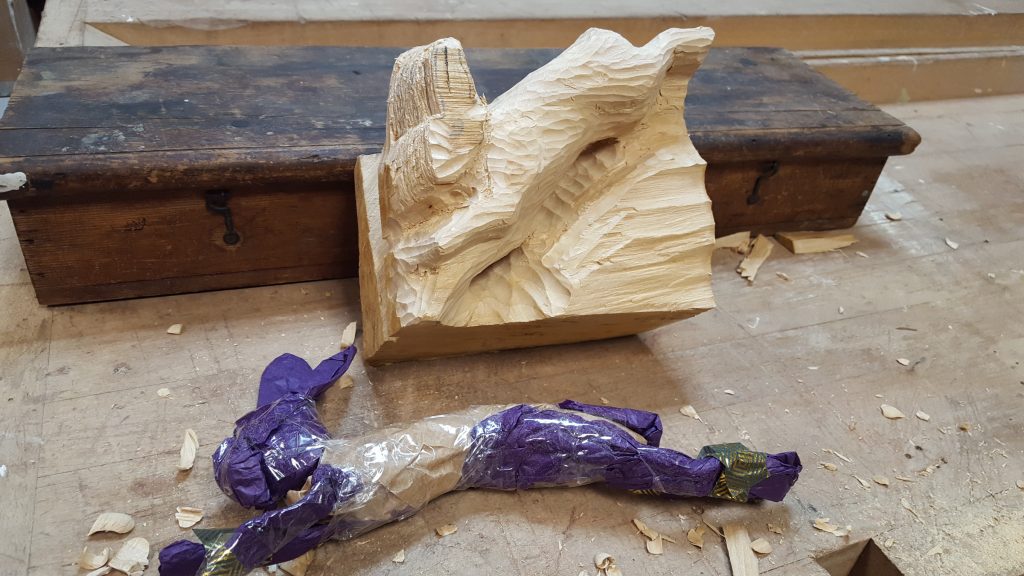
What is mindful crafting?
I am certainly no expert in mindfulness; I set aside my mindful meditation journey when it was just tender shoots. I did find that Ruby Wax’s books are a very approachable introduction to mindfulness and include some of the neuroscience evidence that shows it works, how it works and what it does. There has been lots of search on mindfulness, in particular mindfulness based cognitive therapy (MBCT). Mindfulness is not emptying your mind but is intentionally paying attention, of awareness and acceptable of the present moment. Basically stopping the autopilot, the constant doing and the multitasking that has come to shape our modern lives.
Through mindfulness you take control of thoughts, emotions and your reactions; practice self-compassion; analyse thoughts and moods; make active choices with thoughts and moods; connect to feelings; and quieten the babbling mind. It has been shown clinical effects for chronic pain, emotional pain of depression and anxiety, addictive behaviour and PTSD. But as I have alluded to, mindful mediation does not work for everyone. It is hard work. We know some people find similar effects through exercise or yoga, so perhaps crafting could have a place in mindful practice? When you are crafting you aren’t consciously trying to reach the state of mindfulness, it’s just a natural by-product of focusing on the present, what is in your hands and something enjoyable.
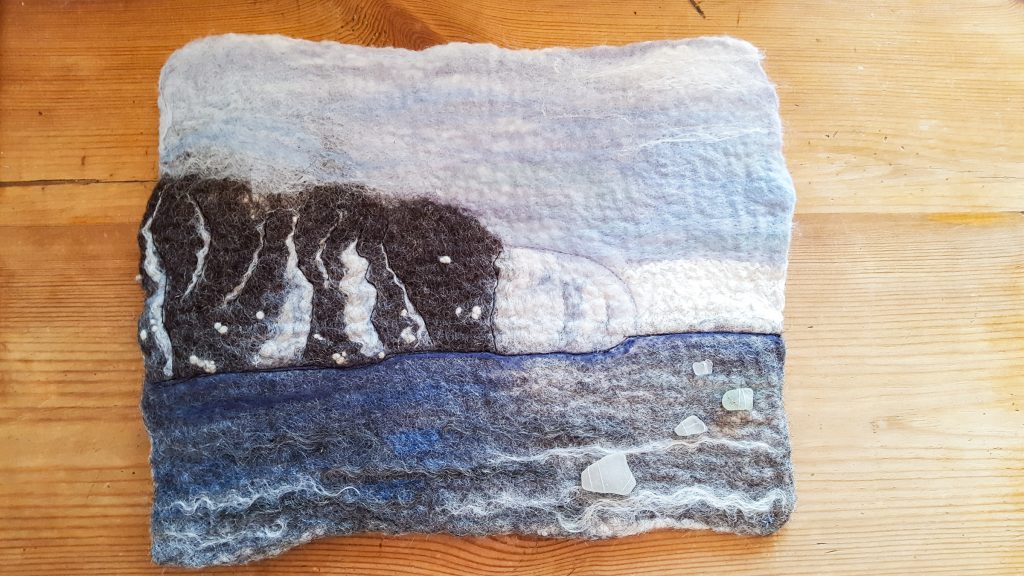
What does mindful crafting do?
So what does mindful crafting do for mental health or wellness? Mindful crafting is not just a distraction or diversion or even escapism – that’s what TV is for. These aspects can be useful as long as you realise that is what you are getting out of it, blocking stress and anxiety. Crafting obviously also creates something, something you might want or use. But mindful crafting can be so much more than this for mental health:
- It induces a relaxation response and enhanced calm that lowers heart rate and blood pressure, equivalent to yoga (reference here).
- It allows mental space for contemplation to reflect on problems and emotions and focus on the present.
- While busy crafting there is a passive release of thoughts, including the negative ones.
- Self-development, including building self-esteem and resilience.
- It allows creativity to flourish in lives too busy for it otherwise, growing our self-knowledge and self-expression.
- Socialising, as it is well understood that social isolation is a negative factor for mental health.
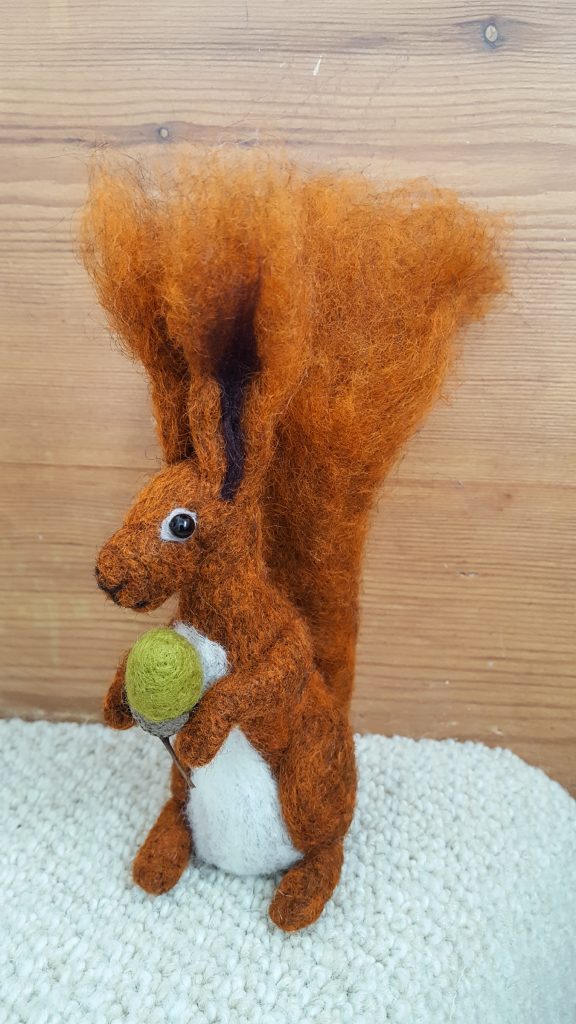
Is all crafting mindful?
Making something with our hands is a deep human need. It is only in recent decades has this mostly been relegated to ‘hobbies’. Previously if you wanted something, it was unlikely you would be able to afford to buy a finished item even if the item could be bought. For most of human history, if you wanted something then you had to make it. Not everyone would know every skill to craft something but you would know someone in your community who could make it for you, or repair it if it was broken.
Definitely some crafts are more adapted to mindful practice than others, though a large part of this is how you approach the craft rather than picking one over another. Let me put it like this. Making a cake would not strictly be craftful but you could make it when in a bad mood and an angry frame of mind and it would like turn out with those properties in it – it might not rise, it might slump when you take it out the oven, it might not taste as good you would expect. But make the same cake in a good, lighthearted frame of mind, putting love into every turn of the spatula and it is a lovely light, tasty Victoria sponge.
The slow crafts lend themselves to mindfulness whereas the short hit of dopamine of a speedily created and finished project will feel good for the short time dopamine is around but will quickly wear off. Methodical crafting also helps you get in the right mind state with the planning and preparation then the execution, while slowly seeing your project take shape. Think of designing and making a new knitted garment; the visualisation, idea gathering and planning of stitch pattern, followed by the time taken as the rows of knitting slowly build to reveal the item that until that moment had only existed in your imagination. Repetitive and rhythmic actions such as stitching, needle-felting, crochet or knitting are likely to be more calming; in fact, the clacking of needles or the pop-woosh of thread through fabric is almost like a meditative mantra.
All this is not to say that you cannot get any good out of a diversion or distraction craft with a quick hit like a colouring book or a cross-stitch following a pattern. They certainly have their place in dispelling bad thoughts when you need a quick fix and no energy to do anything more. I know, I do this type of crafting often and for those reasons and as learning exercises or to try a new craft or technique. But I also acknowledge that they are not the same as a fully immersive creative and expressive output.
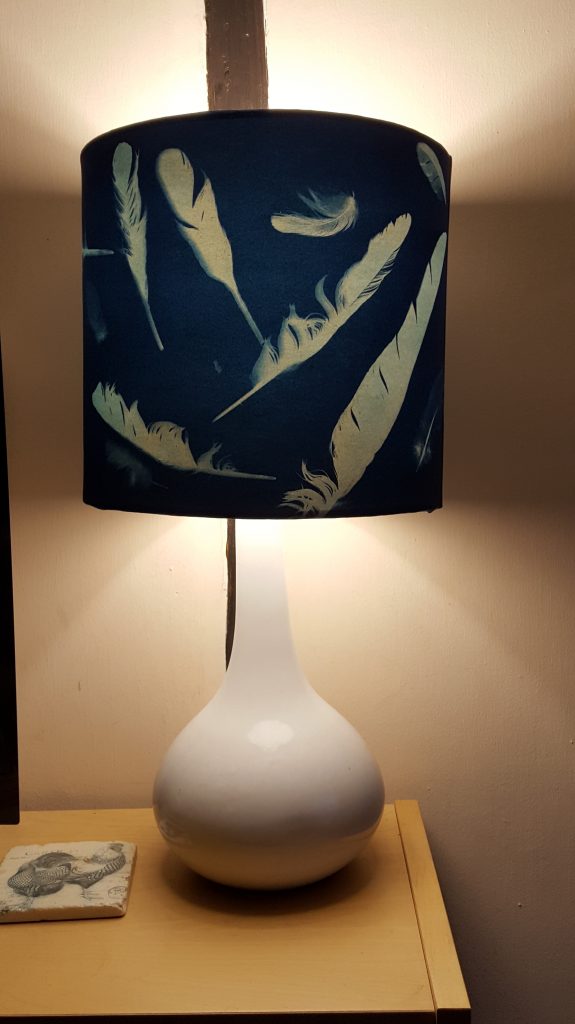
Positive benefits of crafting and the evidence
There is most definitely evidence out there for the positive effects of crafting on mental and physical wellbeing even though this is a relatively new area of research and is not likely to have great funding, lacking a pharmaceutical backer. Also, as an area of social and psychological science, it does not have the level of evidence we would expect as medical professionals, comparing it to the pyramid of evidence in the EBM manuals – there are certainly no RCT or meta-analyses. So here are a few sources of information about the research and where you can read more:
- www.stitchlinks.com Betsan Corkhill, a UK-based knitting therapist who has done research on the therapeutic effects of knitting. Riley, J, Corkhill, B & Morris C. (2013). The Benefits of Knitting for Personal and Social Wellbeing in Adulthood: Findings from an International Survey. British Journal of Occupational Therapy, 76(2), pp.50-57. Their study found that for committed knitters, there is a significant relationship between knitting and perceptions of feeling calm and happier. Also, members of a knitting community perceived knitting in a group as improving their social confidence and communication. can contribute significantly to quality of life, and to personal and social wellbeing.
- https://www.creativehertfordshire.com/networks/creative-hertfordshire/documents/health-benefits-of-knitting.pdf This report is in two parts: a Literature Review of the evidence-based research on the health benefits of knitting, especially for the elderly, and the opportunities it offers for volunteering. Secondly, a Survey of over 1,000 knitters who send their knitting to Knit for Peace.
- https://yarnfulnessproject.org/ a science engagement and research project, looking at potential benefits of creative and yarn-based activities.
So what are the supposed and documented positive effects of crafting for wellness?
- First and foremost, enjoyable! Otherwise why would you sit still and knit for months to produce a jumper?
- Mental challenge and problem solving with memory formation and retrieval.
- Social connection if you craft as part of a group. Social isolation has been shown to negatively impact wellbeing.
- Mindfulness and flow – complete absorption in the moment
- Development of hand-eye coordination, spatial awareness and fine motor dexterity – this has been shown to be a particular powerful tool for those with dementia or brain injuries.
- Expanding curiosity, openness and observation of the world and learning. Novelty is particularly powerful.
- Teaching patience and perseverance, the power of practice and the value of resilience if it all looks like it is going wrong.
- Practicing non-judgement and self-compassion – it is not always going to go perfectly well.
- Improves self-worth and self-efficacy through a sense of achievement and pride, helping our resilience and approaches to disappointments and challenges in life.
It may be that crafting mindfulness is a way of mindfulness reaching out to a wider audience or one that is unable to do other types of mindfulness.
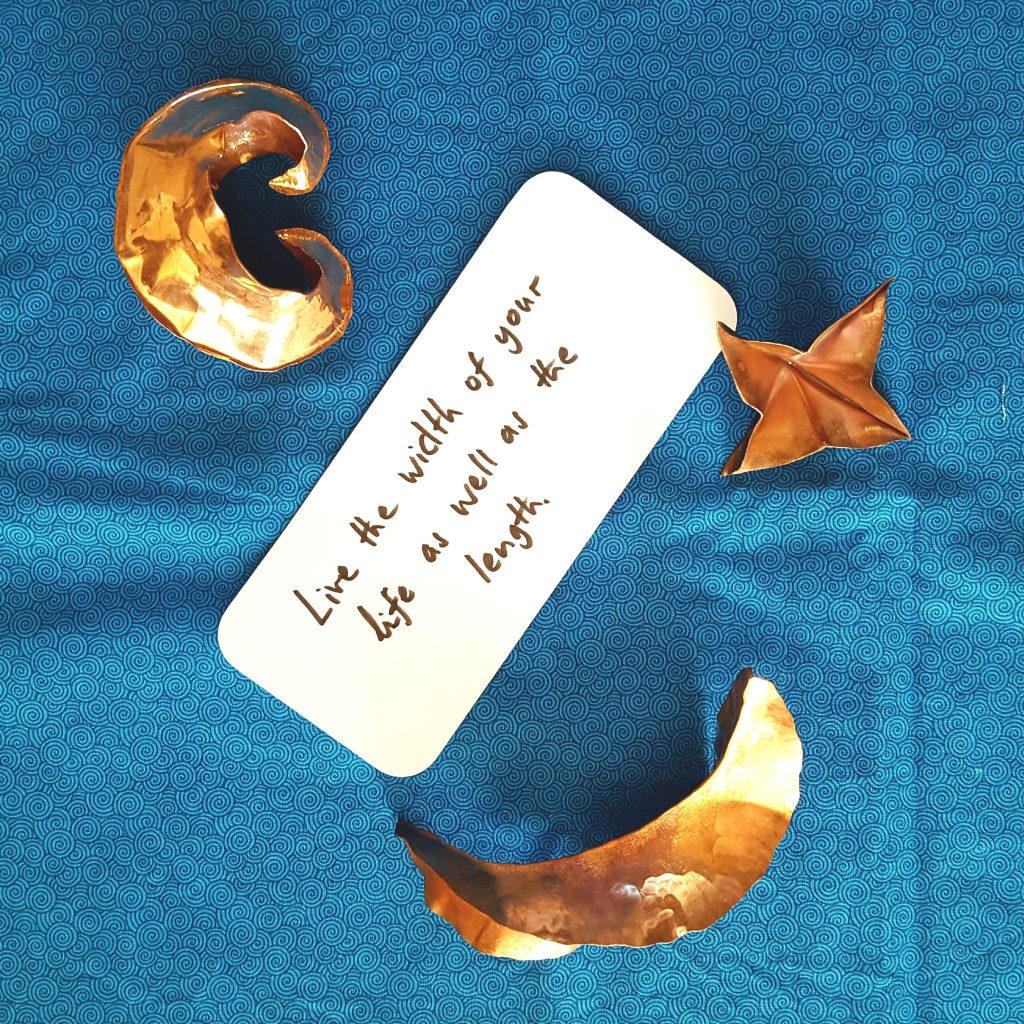
How to mindfully craft
Remember it is more to do with your approach and mindset than any one type of craft.
- Don’t use technology as much as possible – it makes us impatient for immediate results and provides content to be consumed rather than created.
- Embrace a slow craft that does not have immediate results – avoid instant gratification and dopamine hits.
- Embrace the process and learning, not the outcome though some people need a goal and need to see the progress made towards that goal each time they craft.
- Concentrate on your senses and enjoy & embrace them. The feel of the yarn under your fingers, the cool of the metal or the softness of the wool.
- Slow your mind, be in the present moment and don’t dwell about the future or past – consciously incorporate mindfulness and quieten your mind.
- Don’t pick something you feel you would be naturally good at – explore something else. Novelty is a component of happiness.
- Make something that is yours and unique, see new possibilities – avoid kits and patterns. I fall into this trap too often and it has its place but try experimenting.
- Learn what pleases you and what you like – play, there are no rules.
- Make crafting part of your regular self-care rituals.
- Make crafting a joy of giving or a benefit to society such as donating crafted items.
To Finish – A simple creative project for everyday
A simple mindful observation, inspired by Emma Mitchell. Choose a theme for the day, perhaps a colour, or an animal, or things starting with a particular letter of the alphabet and during the day see how many things that fit with that you can find. This could be in the house or outside on a walk. Once you have collected then arrange your items in a pleasing way, photograph or draw them. This is an exercise in observation. You could make this a regular exercise as Emma does with her nature collages.
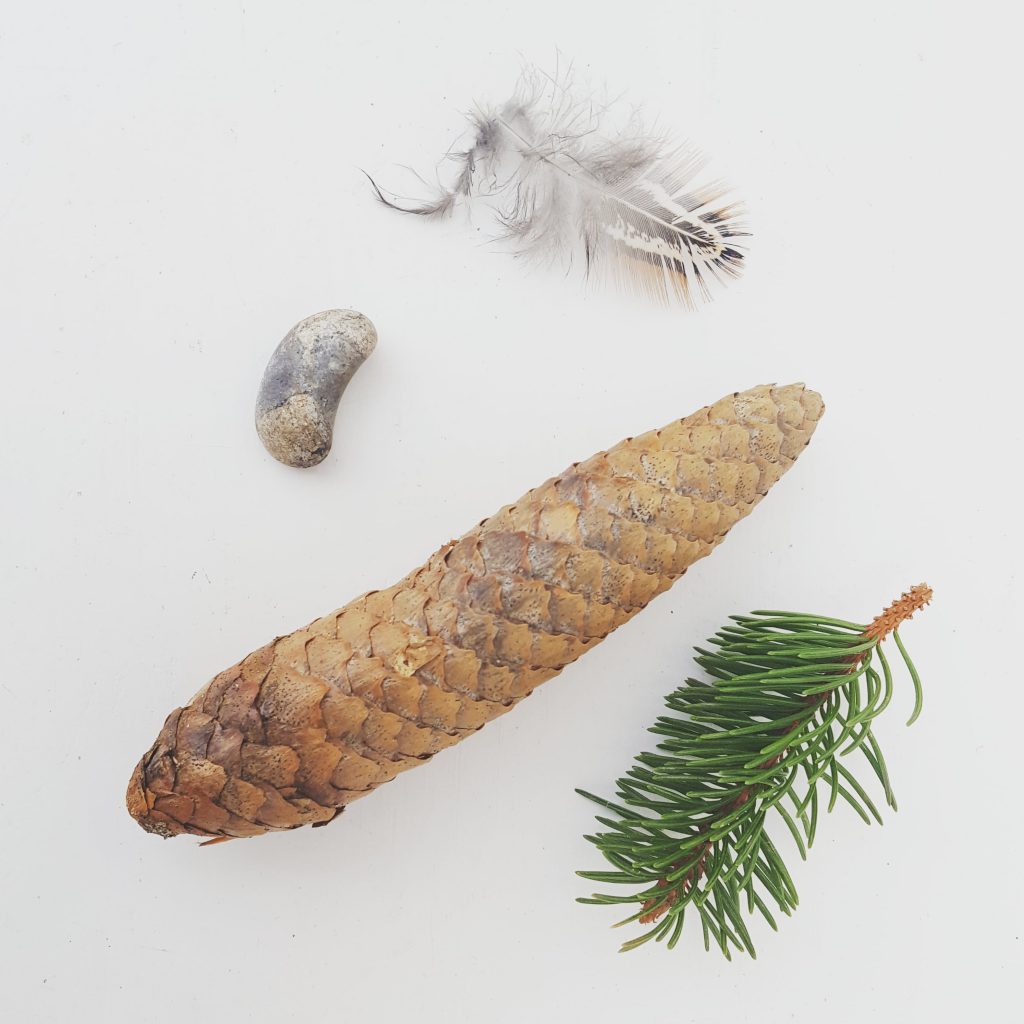
References/further reading
- https://craftiosity.co.uk/inspiration/crafting-a-way-to-mindfulness/
- https://esource.dbs.ie/bitstream/handle/10788/1586/ba_croghan_c_2013.pdf?sequence=1 yarncraft can lead to relaxation or meditation like response similar to that induced by yoga
- https://journals.plos.org/plosone/article?id=10.1371/journal.pone.0211362#pone-0211362-t003 How do artistic creative activities regulate our emotions?
- http://www.stitchlinks.com/pdfsNewSite/research/Poster%20Britsh%20Pain%20Society%20March%202009%20copy.pdf Poster presentation about crafting in chronic pain.

Leave a Reply